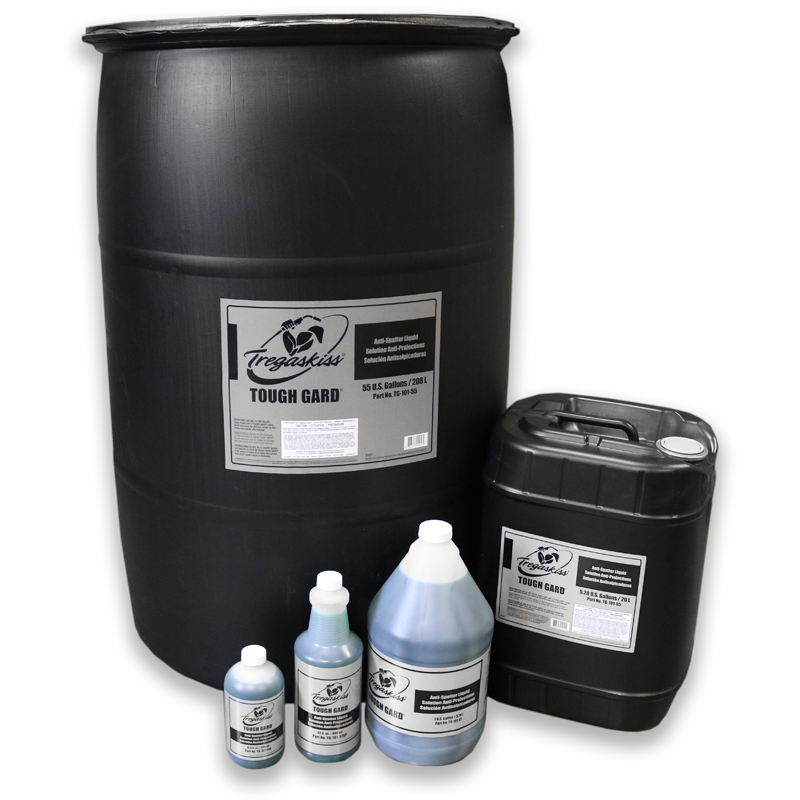How to Select and Use Anti-Spatter Liquid
Having the right products for your welding application impacts quality and productivity. Anti-spatter liquid is no exception. When selecting an anti-spatter liquid for a robotic welding application, be certain that it offers the following attributes:

• Uniform coverage to protect the entire nozzle
• Easy cleanup and no residue
• Compatibility with the nozzle cleaning station or reamer being used
A water-soluble compound, like Tregaskiss® TOUGH GARD® anti-spatter liquid, is a popular option. This liquid is non-toxic and eco-friendly, helping companies to improve employee safety and provide a cleaner work environment. Oil-based anti-spatter liquid is also available in the marketplace, but is generally less desirable to use because it is more difficult to clean up if it settles on fixtures or other parts in the weld cell. Oil-based anti-spatter liquid is not always compatible with all nozzle cleaning stations, and it can clog this equipment.
Safety Tips
Even though the more popular water-based anti-spatter compound is non-toxic, you should always take care when handling and using it.
Consider these tips:
- Avoid breathing in spray mists, and always wash your hands after encountering the compound. or example, when filling the sprayer or setting up an anti-spatter multi-feed system.
- Use a NIOSH-certified (or equivalent) respirator during spraying.
- Wear Nitrile or Butyl gloves and wear chemical safety goggles for the best protection.
- Utilize local exhaust ventilation near the sprayer.
- Store anti-spatter compound containers according to the temperatures recommended by the manufacturer.
- Consult the SDS sheet for complete recommendations for proper anti-spatter liquid usage.
This article is the second in a three-part series focused on the use and benefits of anti-spatter liquid. Read article one, Spatter in Welding: Should You Consider Anti-Spatter Liquid? and article three, Anti-Spatter Sprayer: How to See the Best Results